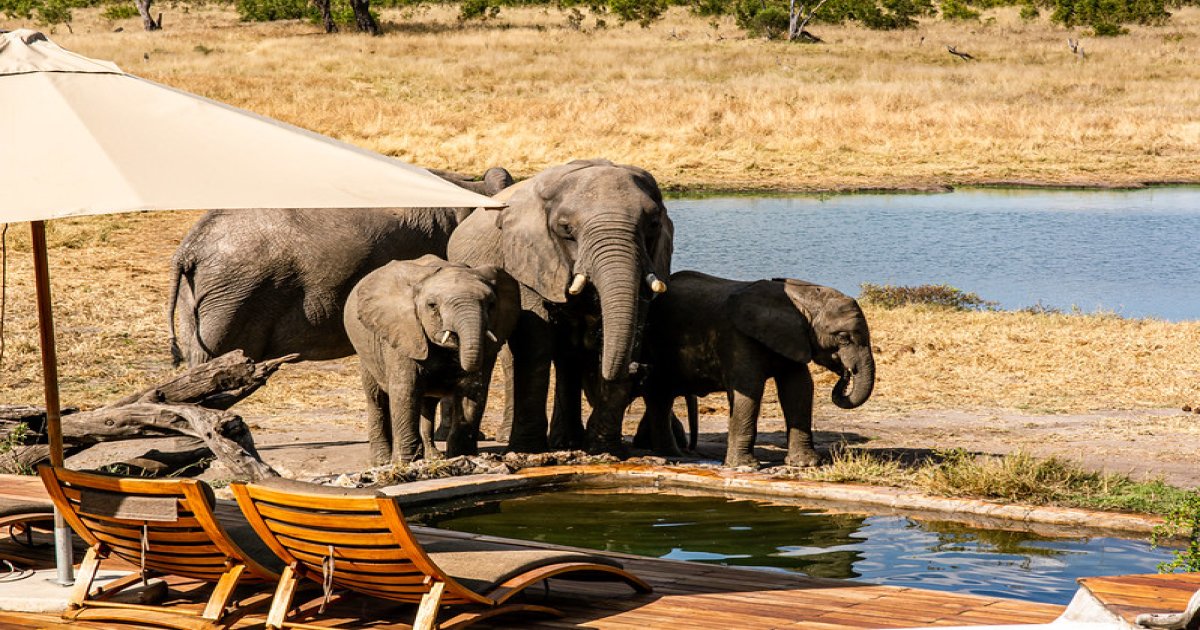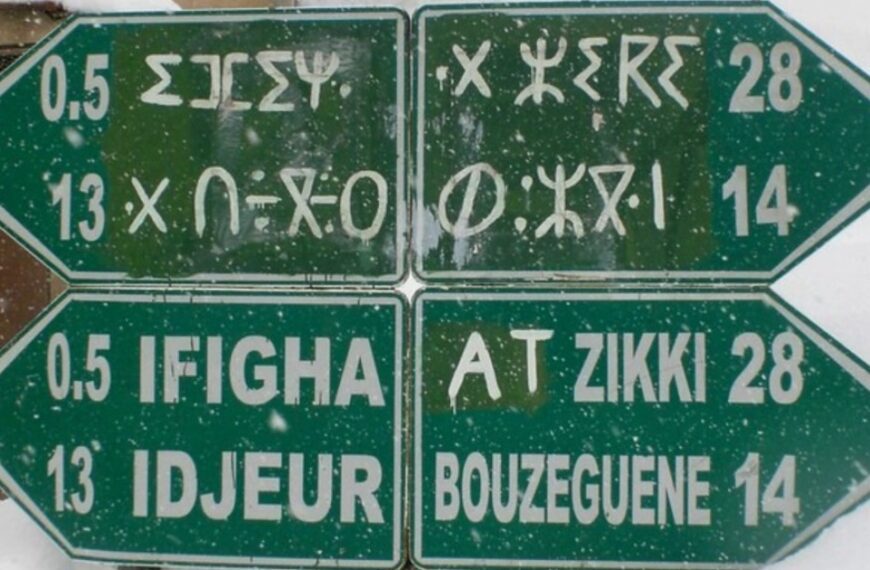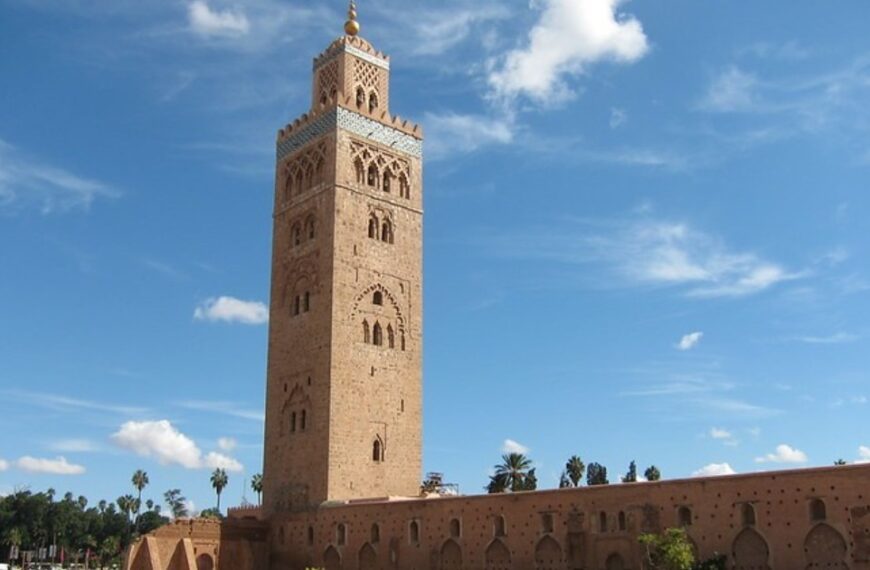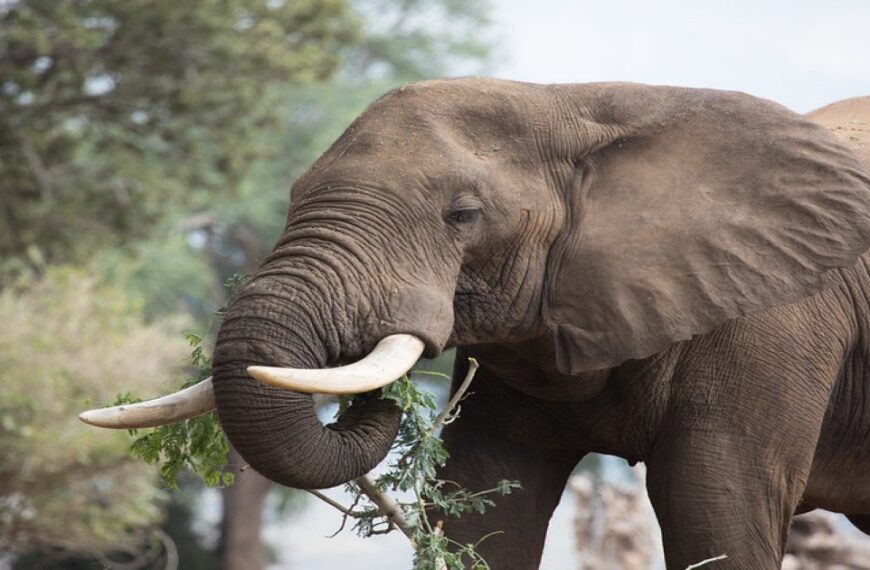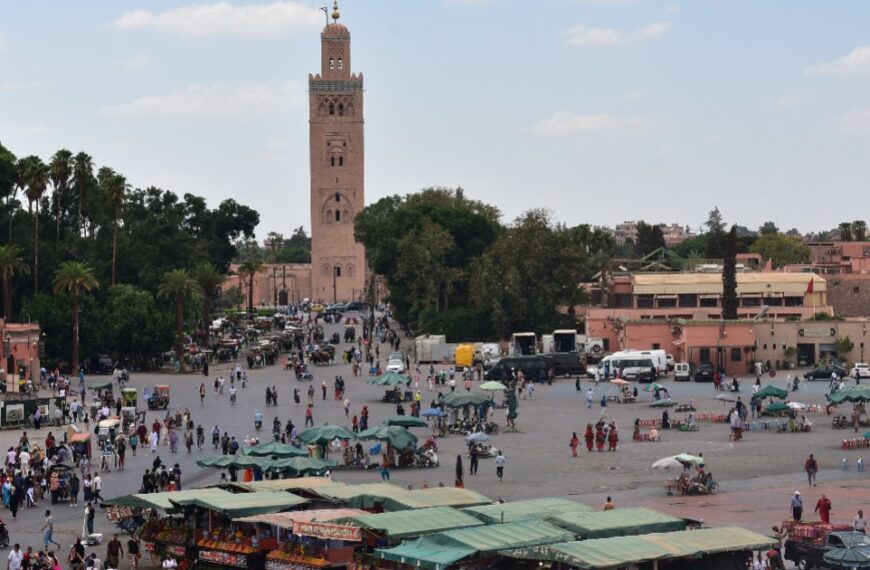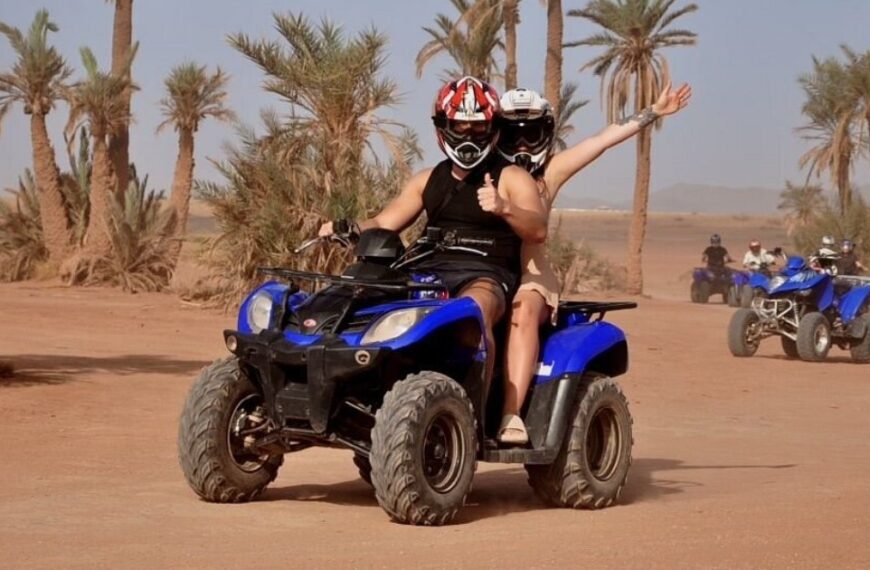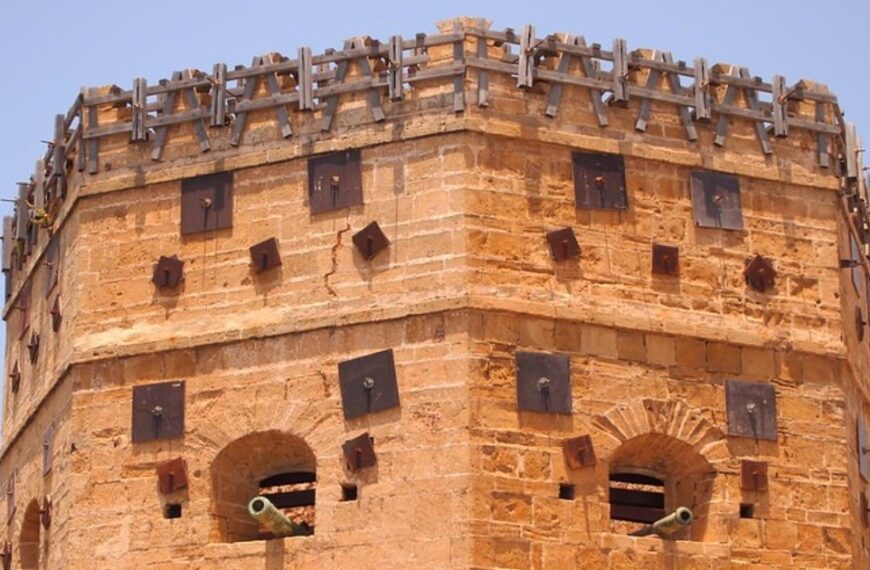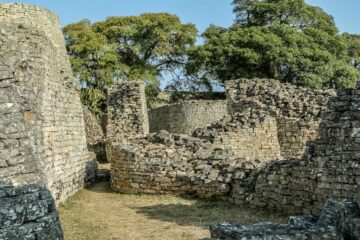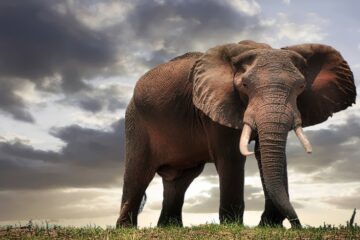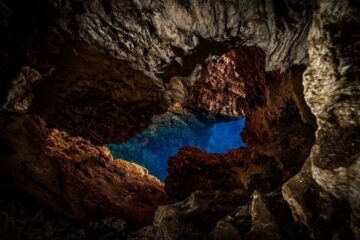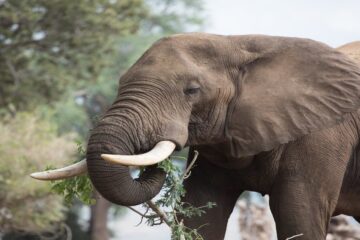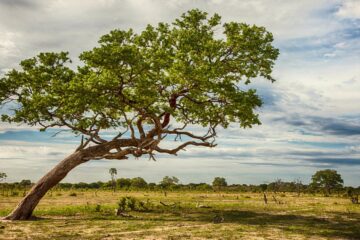With a total area of 14,650 square kilometers, Hwange National Park is the biggest national park in Zimbabwe. Famous for its abundance of wildlife, including the “Big Five,” it is a popular safari destination. In particular, Hwange National Park is well-known for its elephant population and its robust population of wild dogs, both of which are safeguarded thanks to an effective conservation effort.
Hwange National Park is located in northwest Zimbabwe, near the tiny town of Dete, on the major highway between Bulawayo and the world-famous Victoria Falls. Most visitors combine a Big 5 safari trip to Hwange National Park with an exhilarating tour of Victoria Falls and boat cruises or fishing excursions on the magnificent Zambezi River, both of which are within a breathtaking 1.5-hour drive south of Victoria Falls.
Travelers visiting Hwange National Park may choose from a variety of Zimparks accommodations in the park’s three major camps, as well as private, exclusive safari lodges. Hwange National Park also has campgrounds and caravan parks for visitors.
Where is Hwange National Park Located?
Towards Zimbabwe’s southwest, in Africa’s southern area, is where you’ll find Hwange National Park. Located on the Zambezi River between Zimbabwe and Zambia, Victoria Falls is around 100 kilometers away. Hwange National Park is located in southwestern Zimbabwe; however, the capital city of Harare is the nearest large city.
History Of Hwange National Park
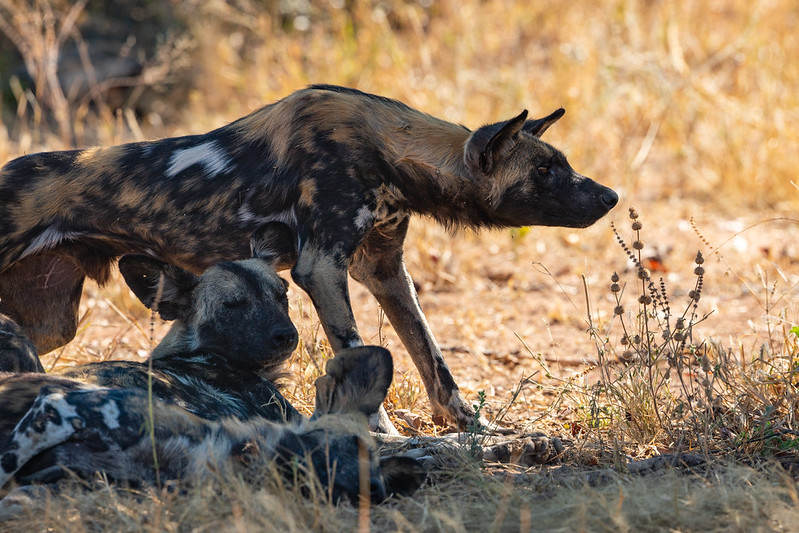
The Matabele warrior monarch Mzilikazi used this enormous wilderness as his personal hunting preserve in the early 19th century. In 1930, the area was designated as a nature protection area to preserve its native flora and animals. Wankie National Park is the result of the merger of three separate nature preserves. Wankie Game Reserve, Robins Game Sanctuary, and Guzuma Pan Game Reserve were among them.
When the national park was opened, only approximately a third of it was accessible to the public due to a lack of finances, and there weren’t many visitors. After Zimbabwe’s independence, the park was renamed from Wankie to Hwange, after the local chief.
Hwange National Park hit hard times as conservation and operating funds almost dried up and visitor numbers plunged during the political and economic turmoil in Zimbabwe under the despotic dictatorship of President Robert Mugabe. Only the most hardy lodge and concession owners persisted through the widespread hunting and poaching.
The fortunes of Hwange National Park have changed in recent years. Visitors have been flocking there in ever-increasing numbers as word of this southern African Big 5 safari location spreads throughout the globe.
Why Visit Hwange National Park?
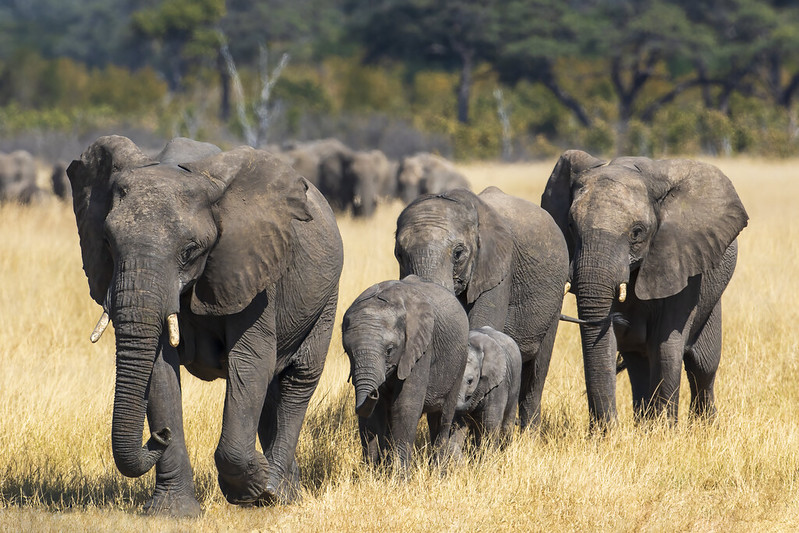
Low Visitor Numbers
The extensive wilderness region in Hwange National Park is teeming with fauna and has a small number of visitors. Hwange is still comparatively “empty” compared to Tanzania, Botswana, and South Africa’s most popular national parks so you won’t experience heavy tourist congestion at wildlife sightings or in the camps.
So Numerous Elephants
Hwange National Park in Zimbabwe is renowned for its enormous elephant reproductive populations. The park is home to an estimated 50,000 elephants, with certain areas containing as many as 300 elephants. There are very few rhinos remaining in Hwange because they were nearly wiped out by extensive poaching, but there are abundant populations of the other Big 5 animals.
Varied Species
Hwange is renowned for its abundant fauna and birdlife. There are more than 100 mammal species and an estimated 500 species of birds in the park. Wildlife and birds rely significantly on the man-made waterholes that developed in the earliest days of the park’s establishment, and you’ll have some of your most memorable wildlife encounters in and around these meeting points.
Due to extensive poaching, the rumor that Hwange has “no wildlife” is wholly false. Yes, uncontrolled hunting and poaching have reduced groups, but environmental organizations have worked assiduously in recent years to protect the park’s wildlife. The wild dog breeding program in Hwange has resulted in a steady increase in the number of remarkable painted canines.
Luxury lodgings on a global scale
Hwange National Park’s lodging options have greatly improved in recent years as a result of revitalization work done by Wildlife Safaris on the park’s safari lodges and bush camps.
Hwange National Park in Zimbabwe is home to a handful of privately owned and operated safari lodges. They have first-rate accommodations that can hold their own against those in the Serengeti, Okavango Delta, and Greater Kruger.
You can check out the best lodges and camps in Hwange National Park here.
Interesting Facts About Hwange National Park
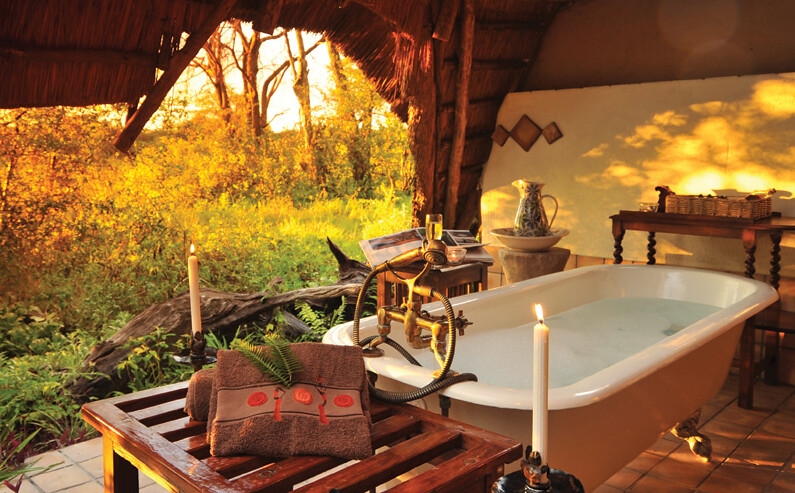
Part 1
Hwange was established as a national park in 1928. Due to widespread hunting, species of animals were at a critical low point at the time. Hwange National Park is now home to around 50,000 elephants, up from less than 1,000 when the park was established.
The Ndebele warrior-king Mzilikazi made this remote area his own hunting preserve in the early 1800s. Since the property was unfit for agriculture owing to poor soil and a lack of water, it was transformed into a wildlife reserve.
Wankie Game Reserve, the name given to the nature preserve, was officially proclaimed in 1928. In 1930, the combined wilderness area that includes Robins Game Sanctuary and Guzuma Pan Game Reserve was declared a national park.
The first park warden, Ted Davison, served in the national park system. He went across to what was then Rhodesia to work as a tsetse fly control officer when he was only 22 years old. During his 33 years as a park ranger, he transformed the wilderness area into a world-famous national park.
Part 2
Robins Area is where you can HG Robins, a mysterious figure, who inspired the name of Robins Camp. He lived in the middle of nowhere and spent his time stargazing via a tower-mounted, enormous telescope. He left his farmland to Hwange National Park in his will. His original house and lookout tower are included in the Robins Camp structure.
Natural salt licks (made of lime and sodium) and shallow pans are a remarkable feature of Hwange National Park, attracting a variety of species from the dry, harsh Kalahari Desert. In the wet season, several of the natural pans may go to a depth of 1 meter, with diameters of 20-30 meters. When ants construct their mounds, they transport salts to the top, which causes the pans to form.
The natural pans in Hwange National Park have salt deposits that the elephants in the park want. They consume the anthills to get the salts out of them. This results in depressions that collect potentially useful rainfall.
The number of elephants in Hwange National Park is among the highest of any in the world. It’s predicted that there might be as many as 40,000 to 50,000 of them. The area is a showcase for the Kavango Zambezi Transfrontier Conservation Area (KAZA TFCA) since it is home to the world’s biggest continuous elephant population, thanks to the addition of elephants from northern Botswana.
Part 3
Famous for its abundance of animals, including the “Big Five,” the park is a popular safari destination. Hwange is home to a wide variety of animals, including many elephants, buffalo, wildebeest, lions, leopards, cheetahs, hyenas, wild dogs, giraffes, zebras, hippos, and antelopes including gemsbok, sables, roan antelopes, and elands. Unfortunately, sightings of the critically endangered black and white rhino are quite uncommon in Hwange National Park. Hwange is experiencing severe rhino poaching.
Hwange National Park is home to around 400 different bird species. Species of birds range from those found in the dry, arid Kalahari Desert to those found in the lush, rocky highlands of Zimbabwe.
Sinamatella, Linkwasha, Dzivanini, Shakwanki, and Tsamhole are the park’s five designated wilderness areas.
Hwange’s southern two-thirds are characterized by the sands of the Kalahari Desert, which are home to massive Zambezi teak and other hardwood forests. Old fossil lakebeds and drainage patterns dot these priceless forests, sustaining wide savanna grasslands dotted with acacia and leadwood trees.
Part 4
The Kavango-Zambezi Transfrontier Conservation Area (KAZA) includes Hwange National Park as one of its components. The international boundaries of five nations converge in this precious protected area. At the confluence of the Zambezi and Chobe Rivers, where Botswana, Namibia, Zambia, and Zimbabwe all converge, you’ll find the heart of the region. Chobe, Hwange, and Victoria Falls will all become part of KAZA in the not-too-distant future.
From Victoria Falls, you can reach Hwange National Park in a little over an hour by car (the distance is around 100 kilometers), or you may take a quick 25-minute private air charter trip. Victoria Falls, based on its breadth and height, is the biggest waterfall on Earth and one of the Seven Wonders of the Natural World. Hwange National Park is a popular safari destination for tourists from outside who also want to see Victoria Falls.
Hwange is not served directly by any local or international airlines. To reach their safari resort in Hwange, international guests often fly into Victoria Falls Airport and then take road or plane transport.
The critically endangered wild dog, sometimes known as the “painted dog,” may be seen in large numbers in Hwange National Park. Hwange is home to a successful rehabilitation facility for wild canine puppies that have been wounded or abandoned by their parents. Once healthy, these pups are released back into the wild.
Who Owns Hwange National Park?
The government of Zimbabwe employs the Zimbabwe Parks and Wildlife Management Authority (Zimparks) to oversee Hwange National Park. Zimparks manages 11 of Zimbabwe’s national parks, including Hwange.
Is Hwange National Park A Big 5 Safari Destination?
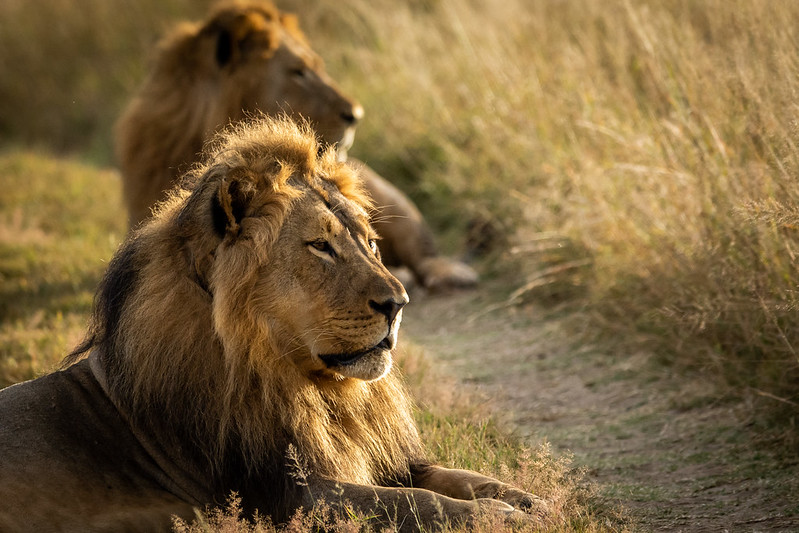
The Big Five may be found at Hwange National Park. Unfortunately, because of ongoing poaching, encounters with black and white rhinos are quite uncommon.
Approximately 40,000 to 50,000 elephants call the park home, making it famous for its breeding herds. That’s more than the combined amount of South Africa and Kenya’s elephant population.
Hwange is home to a wide variety of animals, including the African lion, African buffalo, leopard, cheetah, wild dog, serval, and spotted hyena. Hwange is home to a small population of brown hyenas, however, sightings of these animals are uncommon. The wild dog population in Hwange National Park is renowned as being among the greatest in southern Africa. Hwange’s wild dog population, which was last estimated at 150, is slowly rising because of a successful breeding program.
Is It Safe To Visit Hwange National Park?
Visiting Hwange National Park is risk-free, but you should only do so if you do it via a reliable safari company. This is mostly due to problems outside the Park, such as inadequate road infrastructure and unscrupulous individuals at border crossings and roadblocks, rather than problems inside the Park itself.
There have been no incidents of criminality in the Park that would endanger visitors, but poaching is still a major issue.
To cut down on travel time, flying in and out of Zimbabwe is your best bet. To get to Hwange, you should take a flight to Victoria Falls International Airport and then take a private air charter or a guided drive with a reputable safari tour company.
Poor roads and high rates of traffic fatalities are major problems in Zimbabwe. There is still an issue with police corruption, namely with traffic officials demanding bribes. If you plan on driving to Hwange National Park, it’s important that you obey all traffic laws and stay out of trouble if you are pulled over.
African national parks have challenges from the spread of tropical illnesses such as malaria, bilharzia, and cholera. Get vaccinated before you go to Zimbabwe and learn what other safety measures you can take to protect yourself from tropical illnesses.
It’s important to use caution in the larger cities, especially Harare, due to the prevalence of small crime. Theft from hotel rooms and vehicles, as well as theft of personal items, are all examples of this. It would help if you use the same level of care as you would in any other developing nation. Take precautions, don’t attract attention to yourself (by, for example, flashing money or displaying costly jewelry), and protect your valuables.
Zimbabweans, although living in difficult conditions, are kind and accommodating. Tourists’ well-being should always come first since the industry is crucial to local economies. The vast majority of Zimbabweans are fluent English speakers.
Is There Malaria in Hwange National Park?
Malaria risk is moderate in the vicinity of Hwange National Park. When visiting Hwange, and for the appropriate time thereafter, anti-malaria medication should be used. If you want to know more about malaria in Hwange and what you can do to protect yourself from contracting this potentially fatal illness, you should talk to your doctor or a respected travel clinic.
Read also: Official Languages Of Zimbabwe, What To Know?

